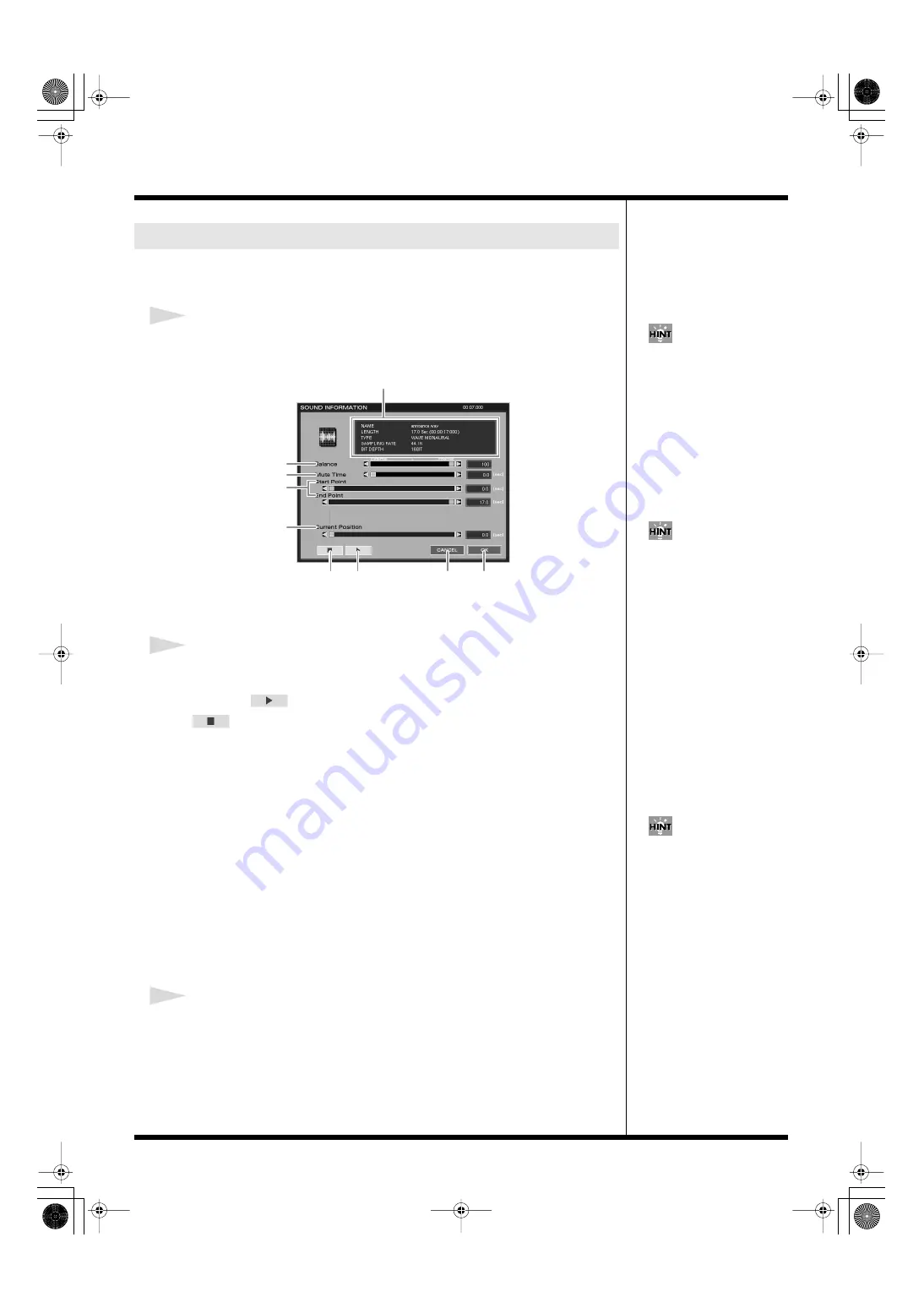
66
Creating a movie
Here’s how you can carry out more detailed settings, such as editing the length of
the sound, adjusting the volume, setting the Starting or ending time, etc.
1
Click to select the sound, then click [INFO...].
The SOUND INFORMATION window appears.
fig.sound info01.eps
2
Configure the sound settings.
Click on either end of each item’s slide bar to adjust the settings.
By clicking
, you can listen to check the settings. To stop playback, click
.
• “Balance”
Adjusts the volume of the sound. If you have lined up a multiple number of sounds,
you can adjust their relative balance.
To adjust the volume of the entire movie, use the “OUTPUT” knob on the front
panel.
• “Mute Time”
Sets the time to fade in/out near the start/end point of the sound.
• “Start Point”/”End Point”
Sets the start/end point of the sound.
If the sound material has an unnecessary part, you can set these points to play only
the necessary part.
• “Current Position”
You can move to the desired playback position of the sound.
3
Click [OK].
The settings are saved, and the window disappears.
To cancel this operation, click [CANCEL]; the window goes away without any
settings being saved.
Detailed settings for the sound
You can also double-click on
the sound data to access the
SOUND INFORMATION
window.
Sound material information
[OK]
[CANCEL]
Play
Stop
"Balance"
"Mute Time"
"Start/End Point"
"Current Position"
You can also adjust the balance
between the input sound from
external devices and the sound
material you are editing (p.
100).
You can also check the sound
information (name, length,
type, sampling rate, bit depth)
at the sound material
information area on the upper
part of the SOUND
INFORMATION window.
000RG-100.book 66 ページ 2004年8月6日 金曜日 午後5時37分






























